BAE Systems awarded $347 million NERVE contract from NGA
In 2024, the National Geospatial-Intelligence Agency (NGA) awarded BAE Systems a five-year indefinite-delivery, indefinite-quantity $347 million contract for NERVE, the National System for Geospatial-Intelligence (NSG) Enterprise Repository and Virtual Environment program. NERVE will modernize the NSG Consolidated Library (NCL), which includes expanding it from a physical data center to cloud-based data services.
 The NCL is a centralized operational and systems framework that hosts geospatial intelligence (GEOINT). NERVE will take capabilities that have been on premise at physical locations and migrate them to a modern cloud-based software architecture. Regardless of location, this will enable NGA analysts to receive and make sense of vast amounts of information faster. NERVE will also provide new GEOINT capabilities and integrate sensors into the cloud-based content management system.
The NCL is a centralized operational and systems framework that hosts geospatial intelligence (GEOINT). NERVE will take capabilities that have been on premise at physical locations and migrate them to a modern cloud-based software architecture. Regardless of location, this will enable NGA analysts to receive and make sense of vast amounts of information faster. NERVE will also provide new GEOINT capabilities and integrate sensors into the cloud-based content management system.
Work on NERVE will take place at BAE Systems’ San Diego; Rome, New York; and Reston, Virginia, facilities, as well as NGA St. Louis and Washington sites. Major cloud deployments are ongoing and will continue through the period of performance.
“This is an important upgrade for the Intelligence Community and Department of Defense due to the high volume of critical data that comes into the NSG workflow,” said Meg Redlin, product line director for Mission Systems at BAE Systems. “NERVE allows that data to flow out at the rate needed to support predictive analytics and missions. It modernizes and sustains geospatial intelligence – getting it to the right users at the right time.”
With more than 25 years of data analytics experience, BAE Systems delivers modernized operations, architectures, and services to the Intelligence Community. These products offer end-to-end capabilities that are intuitive, automated, and fully integrated with enterprise applications to dramatically improve mission effectiveness and enhance decision making for the NSG.
U.S. Space Systems Command selects L3Harris to design resilient GPS satellite concepts
L3Harris Technologies (NYSE: LHX) has received a contract from the U.S. Space Force’s Space Systems Command to design concepts for Phase 0 of the Resilient Global Positioning System (R-GPS) program.
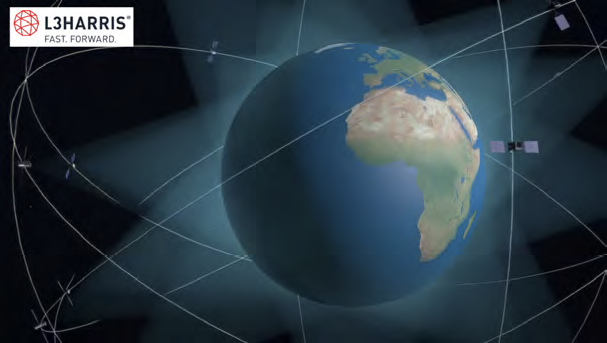 The R-GPS program is a procurement of cost-effective small satellites that will augment the existing 31 satellite GPS constellation providing resilience to military and civil GPS users. The USSF plans to produce and launch up to eight satellites to address jamming, spoofing and more permanent disruptions.
The R-GPS program is a procurement of cost-effective small satellites that will augment the existing 31 satellite GPS constellation providing resilience to military and civil GPS users. The USSF plans to produce and launch up to eight satellites to address jamming, spoofing and more permanent disruptions.
L3Harris is the only company to provide navigation technology for every U.S. GPS satellite ever launched, in addition to designing and building critical elements of the control segment, monitor station receivers and user equipment. This mature technology provides the foundation of the L3Harris R-GPS solution.
L3Harris’ investment in transformational PNT technology uses commercial form factors and interfaces for a modular, scalable solution supporting Space Force needs. L3Harris is also collaborating with the Space Force as the prime contractor on the experimental Navigation Technology Satellite-3 program to develop cutting-edge technology and deliver on accelerated development timelines.
“We are answering the call to protect and defend national security interests by developing and deploying reliable and robust GPS technologies crucial to the warfighter and the global populace,” said Ed Zoiss, President, Space and Airborne Systems, L3Harris. “We will leverage our five decades of experience as a key mission partner providing GPS to deliver a more resilient Positioning, Navigation and Timing (PNT) infrastructure.”
Rocket Lab’s 2nd reentry class spacecraft for Varda operating on-orbit supporting payloads for AFRL + NASA
Rocket Lab USA, Inc. (Nasdaq: RKLB) has announced its second Pioneer spacecraft for Varda Space Industries, Inc. is successfully operating on orbit — the mission launched on January 14, from Vandenberg Space Force Base.
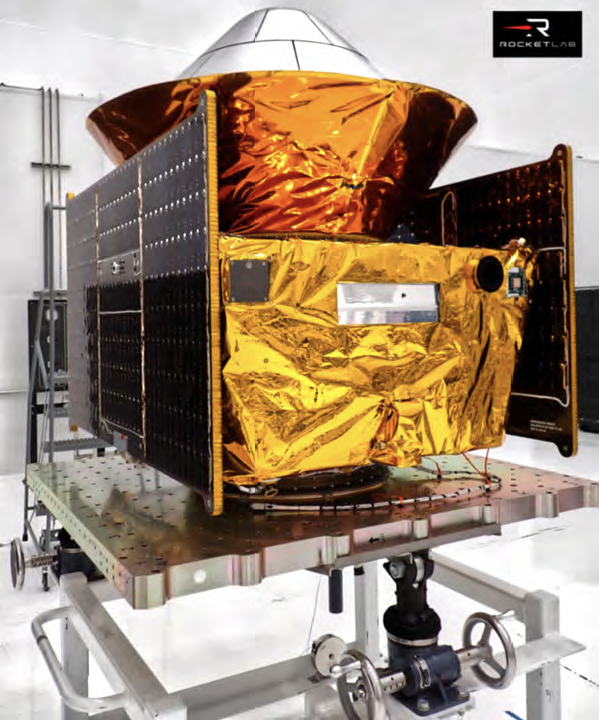 Varda’s W-2 mission includes a Rocket Lab Pioneer spacecraft and a Varda a re-entry capsule carrying a spectrometer from the Air Force Research Laboratory (AFRL). The capsule employs a heatshield with a Thermal Protection System (TPS) developed in collaboration with NASA’s Ames Research Center in California’s Silicon Valley.
Varda’s W-2 mission includes a Rocket Lab Pioneer spacecraft and a Varda a re-entry capsule carrying a spectrometer from the Air Force Research Laboratory (AFRL). The capsule employs a heatshield with a Thermal Protection System (TPS) developed in collaboration with NASA’s Ames Research Center in California’s Silicon Valley.
These payloads are in addition to Varda’s expanded pharmaceutical reactor which will expand capability and capacity for pharmaceutical processing. The W-2 mission follows on from Rocket Lab’s first mission for Varda, which operated on-orbit for eight months before returning to Earth in early 2024 in a successful demonstration of the world’s first orbital manufacturing mission conducted outside of the International Space Station.
Like the first Pioneer spacecraft for Varda, the W-2 Pioneer is delivering critical mission functions for Varda’s 120 kg capsule including power, communications, propulsion, and attitude control.
Following the payload processing phase on-orbit, Rocket Lab’s spacecraft will guide and position Varda’s capsule for deorbit, enabling a hypersonic re-entry and recovery at the Koonibba Test Range in South Australia, operated by Southern Launch.
The Pioneer spacecraft was designed, built, and tested at Rocket Lab’s Spacecraft Production Complex and headquarters in Long Beach, California. It integrates Rocket Lab’s vertically developed components and systems, including star trackers, propulsion systems, reaction wheels, solar panels, flight software, radios, composite structures, tanks, separation systems, and more.
The W-2 mission is the second of four spacecraft ordered by Varda to support orbital processing, with the third spacecraft complete and awaiting shipment for launch.
“Another Rocket Lab spacecraft is in orbit, performing well, and supporting innovative new space capabilities for our mission partners Varda Space Industries,” said Rocket Lab founder and CEO, Sir Peter Beck. “We’ve built a deep expertise in guidance, navigation, and control, allowing us to precisely manage spacecraft operations in some of the most demanding environments, ensuring that our customers, like Varda, can rely on us to safely and accurately deliver their mission goals, from on orbit operations to capsule re-entry.”
“Varda and its partners are building a foundation layer for the orbital economy. The W-2 mission is in service of this goal,” said Varda CEO and co-founder, Will Bruey. “We are looking forward to many more successful missions, and a world where products made in orbit are seen as common place.”
Blue Origin’s New Glenn reaches orbit after successful Thursday launch, “Today marks a new era”
Blue Origin’s New Glenn safely reached its intended orbit during the NG-1 mission, accomplishing the firm’s primary objective.
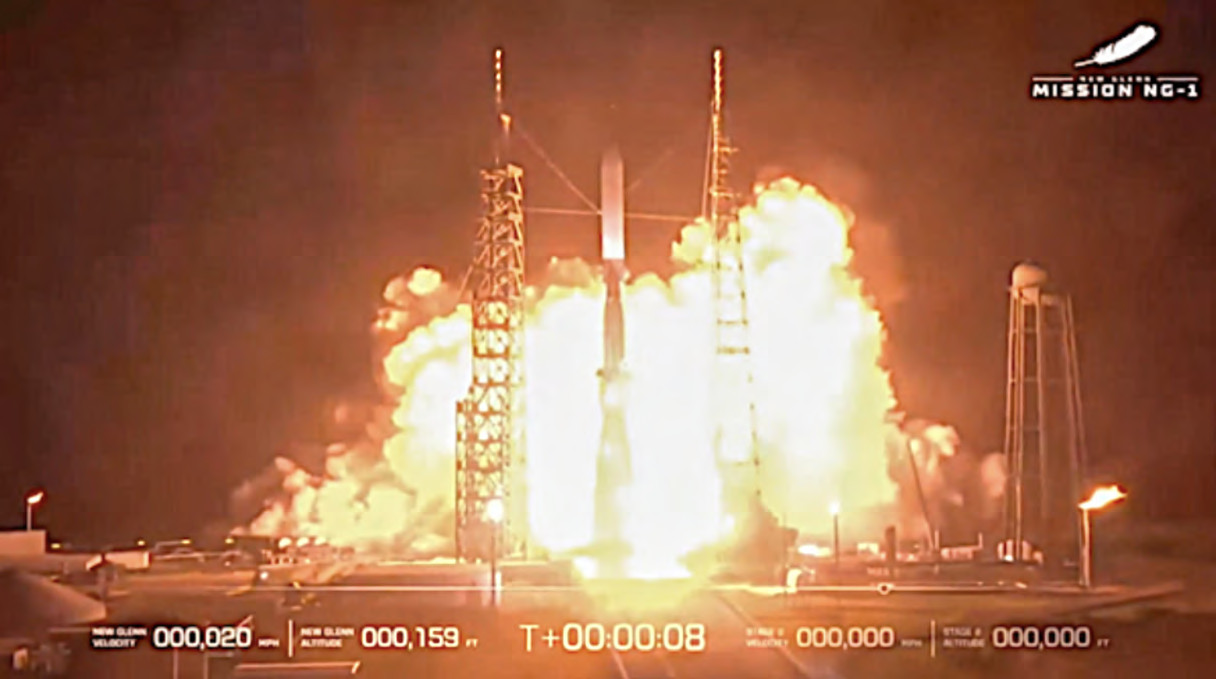 New Glenn’s seven BE-4 engines ignited on January 16, 2025, at 2:03 a.m. EST (0703 UTC) from Launch Complex 36 at Cape Canaveral Space Force Station.
New Glenn’s seven BE-4 engines ignited on January 16, 2025, at 2:03 a.m. EST (0703 UTC) from Launch Complex 36 at Cape Canaveral Space Force Station.
The second stage accomplished the final orbit following two, successful burns of the BE-3U engines. The Blue Ring Pathfinder is receiving data and performing well; however, the booster was lost during its descent.
“I’m incredibly proud New Glenn achieved orbit on its first attempt,” said Dave Limp, CEO, Blue Origin. “We knew landing our booster, So You’re Telling Me There’s a Chance, on the first try was an ambitious goal. We’ll learn a lot from today and try again at our next launch this spring. Thank you to all of Team Blue for this incredible milestone.”
New Glenn is foundational to advancing BLue Origin’s customers’ critical missions as well as the company’s own ooperations. The vehicle underpins the firm’s efforts to establish sustained human presence on the Moon, harness in-space resources, provide multi-mission, multi-orbit mobility through Blue Ring, and establish destinations in LEO.
Future New Glenn missions will carry the Blue Moon Mark 1 cargo lander and the Mark 2 crewed lander to the Moon as part of NASA’s Artemis program.
The program has several vehicles in production and multiple years of orders. Customers include NASA, Amazon’s Project Kuiper, AST SpaceMobile, and several telecommunications providers, among others. Blue Origin is certifying New Glenn with the U.S. Space Force for the National Security Space Launch (NSSL) program to meet emerging national security objectives.
“Today marks a new era for Blue Origin and for commercial space,” said Jarrett Jones, Senior Vice President, New Glenn. “We’re focused on ramping our launch cadence and manufacturing rates. My heartfelt thanks to everyone at Blue Origin for the tremendous amount of work in making today’s success possible, and to our customers and the space community for their continuous support. We felt that immensely today.”
Lockheed Martin delivers 1st Aegis system equipped vessel radar antenna to Japan MoD
Lockheed Martin (NYSE: LMT) has successfully delivered the first AN/SPY-7(V)1 radar antenna for the Aegis System Equipped Vessel (ASEV) to the Japan Ministry of Defense.
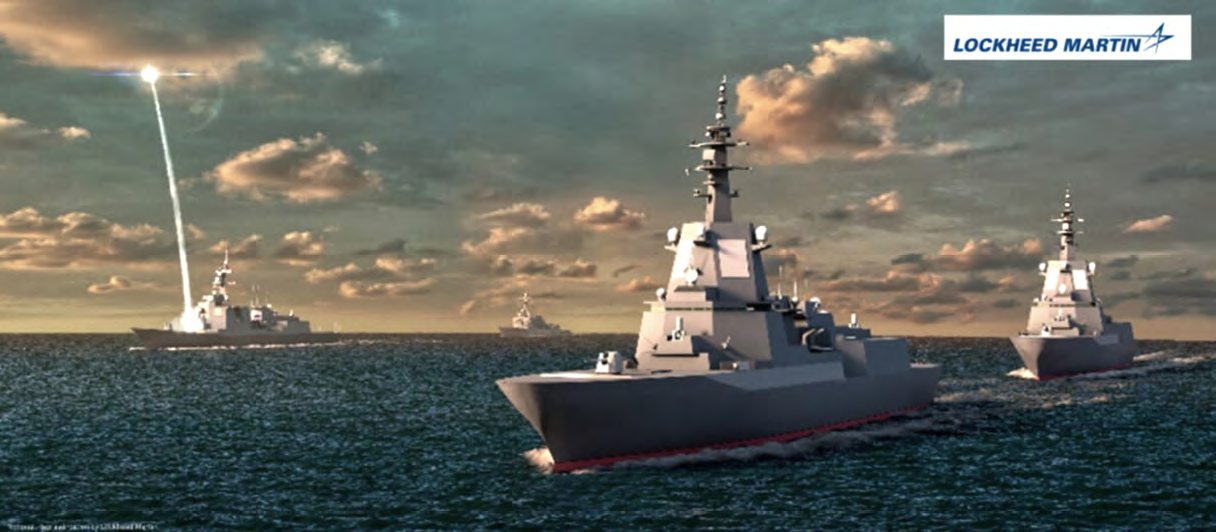 The delivery was made through Mitsubishi Corporation under a Direct Commercial Sale (DCS) arrangement after rigorous acceptance testing.
The delivery was made through Mitsubishi Corporation under a Direct Commercial Sale (DCS) arrangement after rigorous acceptance testing.
The AN/SPY-7 (V)1 antenna will now proceed to final integration with the ASEV combat system at the Production Test Center (PTC-2) in Moorestown in support of full system delivery to Japan.
This comprehensive integration phase significantly minimizes risk during ship integration and ensures optimal system performance prior to delivery.
“This milestone continues to demonstrate Lockheed Martin’s ability to rapidly scale mature, cutting-edge technology for Japan,” said Chandra Marshall, vice president of Multi-Domain Combat Solutions at Lockheed Martin.
Lockheed Martin is committed to supporting Japan’s national security goals, Chandra adding,, “we plan to keep the momentum going with additional antenna deliveries scheduled for 2025.”
This commitment showcases Lockheed Martin’s dedication to providing Japan with cutting-edge technology and expertise, ensuring 21st Century Security to the nation.
Lockheed Martin’s solid-state radar technology, known as SPY-7 for naval application, is empowering warfighters to make rapid and accurate decisions in high-pressure situations.
This cutting-edge system has advanced capabilities to detect, track, and engage more complex ballistic missiles and advanced air threats, simultaneously engaging multiple targets with proven interceptors.
Building on the success of the U.S. Missile Defense Agency’s Long Range Discrimination Radar, this common radar technology has been planned for future deployments including Spain’s F-110 Multi-Mission Frigate and Canada’s River-Class Destroyer.
Additionally, a transportable version of the solid-state radar technology is being deployed in Guam, emphasizing its versatility and adaptability.
L3Harris showcases robotic drone detection capability for U.S. Army
L3Harris Technologies (NYSE:LHX) has successfully demonstrated a new drone detection and defeat capability for its T7 robot system at Vanguard 24, an annual capstone experiment the U.S. Army hosts at Fort Huachuca, Arizona.
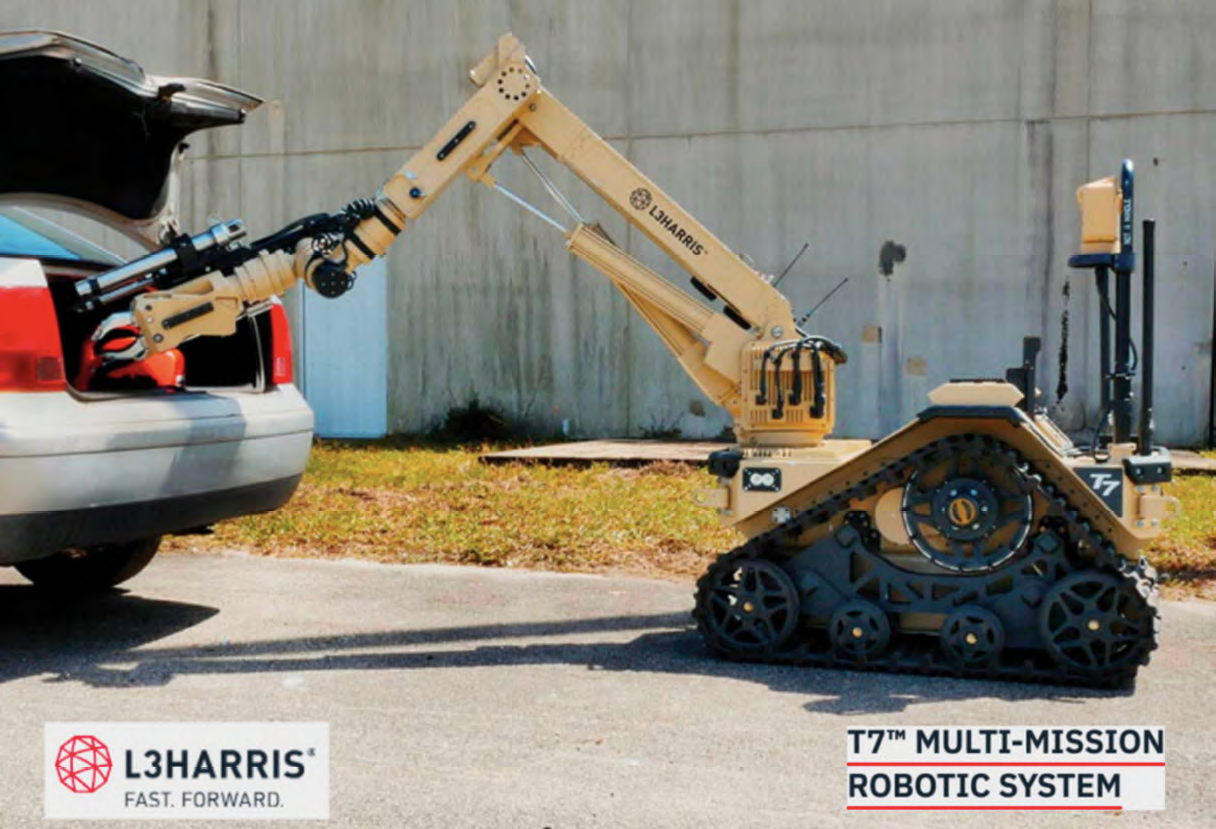 The T7 is a large robotic system that gives operators precision control for Explosive Ordnance Disposal (EOD) and other complex tasks.
The T7 is a large robotic system that gives operators precision control for Explosive Ordnance Disposal (EOD) and other complex tasks.
L3Harris integrated a counter-small uncrewed aircraft system (UAS) onto a T7 robot for the experiment to demonstrate remote drone detection and defeat, a key capability for Army operators.
The experiment also tested the ability to remotely sense, monitor and decode other signals of interest using L3Harris’ lightweight Individual CORVUS Node, which is designed to help users perform multiple electronic warfare and cyber roles in the field.
EOD military forces in the U.K., U.S. and Australia have deployed L3Harris’ T7 robots globally.
“This demonstration proves it is possible to expand the future roadmap of the multi-mission T7 platform,” said Ed Zoiss, President, Space and Airborne Systems, L3Harris. “Using readily available technologies through the T7 network is a powerful example of our commitment to help customers dominate future mission scenarios, from counter-small UAS to spectrum sensing and beyond.”
Kratos receives new hypersonic system program award
Kratos Defense & Security Solutions, Inc. (Nasdaq: KTOS) recently received an approximate $100 million total potential value hypersonic system program award.
 Approximately $15 million of funding has been received by Kratos at contract award, with significant increased funding expected in the second half of Kratos fiscal year 2025.
Approximately $15 million of funding has been received by Kratos at contract award, with significant increased funding expected in the second half of Kratos fiscal year 2025.
Under the new program contract award, Kratos will provide engineering, systems and hardware.
Work related to the program will be performed at secure Kratos fabrication, manufacturing and system integration facilities.
Due to competitive, security related and other considerations, no additional information will be provided.
Tom Mills, President of Kratos C5ISR Division, said, “Kratos’ reputation as the industry leader in delivering military quality hardware, products and systems at scale, was a key factor in the receipt of this new program award. The design, engineering and production of National Security related hardware, that must work every time, is hard, and I am proud of our entire organization’s commitment to the United States and its allies’ mil spec system requirements.”
Eric DeMarco, Kratos President and CEO, said, “Kratos is the recognized industry leader in the rapid development and fielding of affordable hypersonic systems, including Erinyes and Zeus, tactical unmanned jet drone aircraft including Thanatos and Valkyrie, jet engines for aerial drones and missiles and related C5ISR hardware. At Kratos, it’s products today, not PowerPoints of a hoped for, maybe someday system, at an unknown cost. Kratos warfighter and mission focused customers understand that “better is the enemy of good enough and ready to field today”, while reducing development cost and saving money in today’s increasing fiscally challenging environment.”
AV’s 2nd delivery order on a $990 million U.S. Army contract
AeroVironment (AV) has been awarded its second delivery order totaling $55.3 million of Switchblade® loitering munition systems as part of U.S. Army’s Directed Requirement (DR) for Lethal Unmanned Systems (LUS).
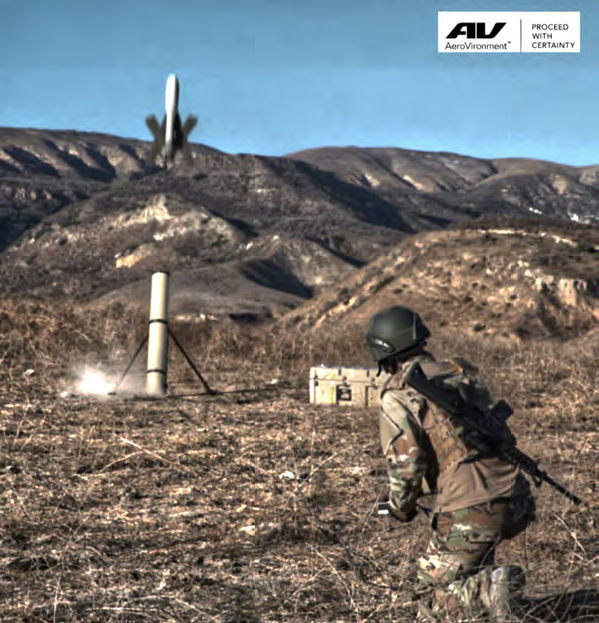 The delivery is part of the 5 year contract from Army Contracting Command-Aberdeen Proving Ground that is Indefinite Delivery, Indefinite Quantity (IDIQ) with a contract ceiling value of $990 million that was announced in August 2024.
The delivery is part of the 5 year contract from Army Contracting Command-Aberdeen Proving Ground that is Indefinite Delivery, Indefinite Quantity (IDIQ) with a contract ceiling value of $990 million that was announced in August 2024.
Switchblade represents the next generation of extended-range loitering munition systems, providing operators in the field with a multi-mission loitering munition system capable of multi-domain operations.
The combat-proven system also features high-precision optics and extended loitering endurance.
“AV is proud to continue deliveries for this monumental contract ensuring the U.S Army has the most capable solutions in their possession,” said Brett Hush, AV’s senior vice president and general manager of Loitering Munition Systems. “Our expanded production capability and streamlined supply chain continue to deliver for the U.S Army, ensuring rapid fielding and support.”


